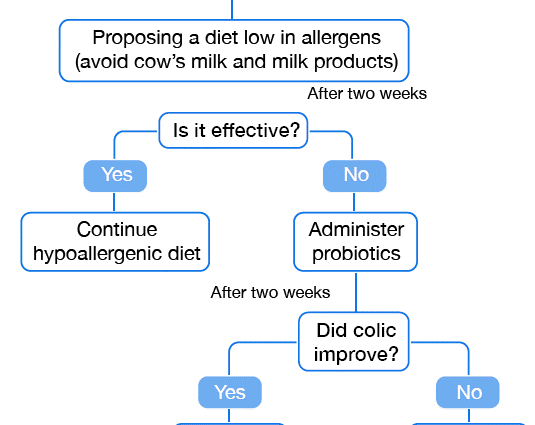Complementary approaches to infant colic
Colic is not a serious disorder and does not benefit from a well-defined medical treatment, several complementary approaches can be considered without risk to try to relieve the child. |
Processing | ||
probiotics | ||
Fennel | ||
Spinal manipulations | ||
probiotics. Probiotics are a promising approach to providing relief for babies with colic. They are the subject of more and more studies and we now know that they can modify the intestinal flora of infants, in particular by limiting the development of certain strains of bacteria responsible for intestinal gas.3,15.
Probiotics could also decrease intestinal inflammation, potentially involved in pain in newborns.
Several recent clinical studies have shown that the intake of probiotics such as Lactobacillus reuteri helped reduce crying in babies with colic2, 15-17.
Fennel. Traditionally, fennel is used as an antispasmodic, anti-inflammatory, analgesic… Fennel-based herbal teas or fennel seed emulsions are a traditional remedy against colic and gas in infants. Three studies have shown the superiority of fennel extract over placebo in reducing crying18, whether used alone or in a herbal tea containing chamomile, verbena, licorice and lemon balm (up to 3 times a day at a rate of 150 ml per dose)19.
However, it is strongly recommended not to replace milk with herbal teas and their use should therefore be limited, especially as their composition is often uncontrolled and unstandardized and some substances can be dangerous for infants.
Spinal manipulations. Some randomized studies have evaluated the effectiveness of chiropractic manipulations, without showing any formal efficacy.3.
In 2012, a Cochrane review of 6 studies (involving a total of 325 children under 6 months) assessed the effectiveness of chiropractic, osteopathy and cranial osteopathy in reducing colic. Unfortunately, the lack of rigor of most of the studies evaluated (not blinded) does not support a conclusion to a significant decrease in the duration and intensity of crying, although the studies taken individually show some improvement.20.










